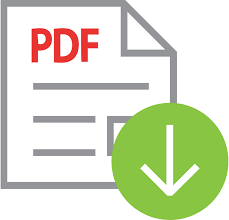Toxic Masculinity Represented in Collen Hoover’s It Ends With Us (2016)
 ), Delvy Wahyuni(2),
), Delvy Wahyuni(2), (1) Universitas Negeri Padang
(2) Universitas Negeri Padang
 Corresponding Author
Corresponding Author
Copyright (c) 2023 Arni Kristin Waruwu
DOI : https://doi.org/10.24036/ell.v12i4.125747
Full Text:
 Language : en
Language : en
Abstract
Keywords
References
Blair, Thomas, E. (2007). A glossary of terms in gender and sexuality. Thailand:
The Southeast Asian Consortium on Gender, Sexuality and Health
Connell, R.W. (1995). Masculinities. Berkeley: University of California Press.
Creswell J. (2018). Fifth Edition Research Design Qualitative, Quntitative, and
Mixed Methods Approach. SAGE Publications, Inc. Retrieved on July 31,
, from https://lccn.loc.gov/2017044644
Eibach, J. 2016. "Violence and Masculinity." In The Oxford Handbook of the
History of Crime and Criminal Justice, Edited by Paul Knepper and Anja
Johansen.
Johnson, Allan G. 2005. The Gender Knot: Unraveling Our Patriarchal Legacy.
Philadelphia: Temple University Press.
Kupers, Terry. 2005. Toxic Masculinity as a Barrier to Mental Health Treatment
in Prison. Journal of clinical psychology l 61: 713–724.
DOI: 10.1002/jclp.20105
Kupers, T.A. 2001. "Psychotherapy with Men in Prison." In The new handbook of
psychotherapy and counseling with men: a comprehensive guide to
settings, problems, and treatment approaches, by Glenn E Good and Gary R
Brooks. San Fransisco: Jossey-Bass.
Maghfiroh, N. (2017). Toxic Masculinity as Depicted in Barry Jenkins’s
Moonlight. Diponogoro: Faculty of Humanities Diponegoro University
Ricciardelli, L. A. 2012. "Body Image Development – Adolescent Boys."
Encyclopedia of Body Image and Human Appearance 180–186.
 Article Metrics
Article Metrics
 Abstract Views : 487 times
Abstract Views : 487 times
 PDF Downloaded : 158 times
PDF Downloaded : 158 times
Refbacks
- There are currently no refbacks.
Copyright (c) 2023 Arni Kristin Waruwu

This work is licensed under a Creative Commons Attribution-NonCommercial 4.0 International License.












